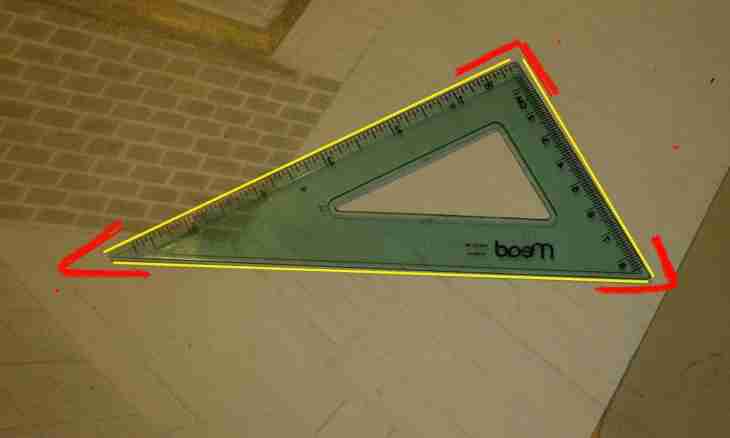Lengths of the parties of a triangle are connected with corners in figure tops through trigonometrical functions - a sine, a cosine, a tangent, etc. These ratios are formulated in theorems and definitions of functions through acute angles of a triangle from a course of elementary geometry. Using them, it is possible to calculate corner size on the known lengths of the parties of a triangle.
Instruction
1. For calculation of any corner of any triangle, which lengths of the parties (a, b, c) are known, use the theorem of cosines. She claims that the square of length of any of the parties is equal to the sum of squares of lengths of two others from which the doubled work of lengths of the same two parties on a cosine of the angle between them is subtracted. It is possible to use this theorem for calculation of a corner in any of tops, it is important to know only its arrangement concerning the parties. For example, to find a corner α which lies between the parties of b and c the theorem should be written down so: a² = b² + with² - 2*b*c*cos(α).
2. Express a cosine of a required corner from a formula: cos(α) = (b²+c²-a²) / (2*b*c). Apply to both parts of equality function, the return to a cosine - an arccosine. It allows to restore on value of a cosine corner size in degrees: arccos (cos(α)) = arccos ((b²+c²-a²) / (2*b*c)). The left part can be simplified and the formula of calculation of a corner between the parties of b and c will take a final form: α = arccos ((b²+c²-a²) / 2*b*c).
3. When finding sizes of acute angles in a rectangular triangle knowledge of lengths of all parties is not obligatory, there are enough two of them. If these two parties are legs (an and b), divide length of that which lies opposite to a required corner (α), at length another. So you receive value of a tangent of the necessary corner tg(α) = a/b, and having applied to both parts of equality inverse function - an arctangent - and having simplified, as well as in the previous step, the left part, remove a final formula: α = arctg(a/b).
4. If the known parties of a rectangular triangle - a leg (a) and a hypotenuse (c), for calculation of size of the corner (β) formed by these parties use function a cosine and the return to it - an arccosine. The cosine is defined by the leg length relation to a hypotenuse, and the formula in a final look can be written down so: β = arccos(a/c). For calculation for the same basic data of the acute angle (α) lying opposite the known leg use the same ratio, having replaced an arccosine with an arcsine: α = arcsin(a/c).

